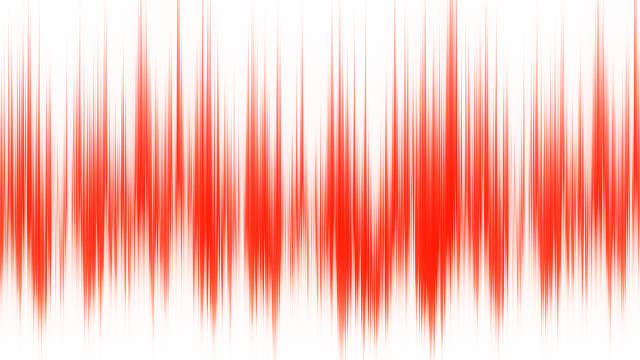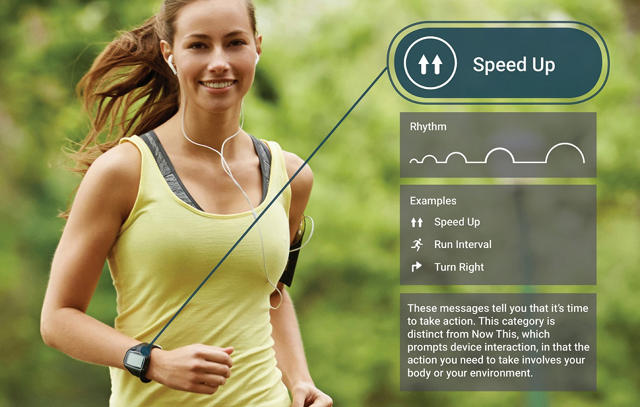Why we’d like A Haptic Design Language For Wearables
higher haptic design might turn smartwatches into silent universal communicators, says Immersion’s VP of UX Chris Ullrich.
March 18, 2015
there may be a disconnect between what wearables can also be and what they at present are, says Chris Ullrich, who heads up user experience at Immersion, a company identified for its haptic remarks innovations. at the moment, even probably the most evolved smartwatch is actually only a mirror of the smartwatch on your pocket. Your phone receives indicators from the arena, and instead of pulling it out the monitor to your pocket, you seem down at the reveal on your wrist.
this is absurd in Ullrich’s eyes, because wearables could truly be so much extra: silent common communicators snuggled up against your pores and skin that can will let you be aware of the whole thing from how briskly your coronary heart is thrashing to what’s taking place on Twitter.
this is why finally month’s cell World Congress in Barcelona, Immersion introduced TouchSense Core platform hopes to fill that void.

the important thing behind TouchSense Core is to higher utilize haptics as a verbal exchange software; to create a design language for the vibrating motors inside of smartwatches that would not only enable wearables to communicate with you invisibly, however simply as importantly, be able to ship nuanced information.
at the coronary heart of TouchSense Core are 5 major categories of notifications, every of which has its personal haptic syntax, based in software. the primary two categories—urgent, or Later—care for immediacy. An incoming cellphone call, as an instance, is a extra urgent notification than any individual retweeting you on Twitter.
Two other classes—Foreground, and history—relate as to whether the notification you’re receiving is on the subject of what you’re currently doing: if you’re a runner, for example, your smartwatch would use one class of notifications to assert you simply ran 5k, and any other to remind you it is time in your daily run.
and since your smartwatch will have to be capable to carry its voice principally other notifications to mean you can recognize you are running low on battery, or to give remarks when you touch the touch display, the last class of notifications has to do with gadget notifications. each and every of these classes in TouchSense Core speaks its personal haptic dialect, with dissimilar notification types that a consumer can analyze over time.
“whilst you take a look at one thing like Android wear, it is truly smartly notion out on nearly every stage,” says Ullrich. “but Google’s not giving any guidance to devs on easy methods to create nuanced haptic sensations,”

that is the issue with wearables—and, indeed, most vibrating gadgets—because it stands at the moment: it is all binary. You both have an alert, or you do not. Your smartwatch might buzz at you, but all the buzzes feel largely the identical. “It makes it in point of fact onerous to tell in case your smartwatch is alerting you as a result of your grandma simply wished you a cheerful birthday, or because you simply lost hundreds of thousands on the stock market,” Ullrich says.
What TouchSense Core is trying to supply developers is what Ullrich calls a “standardized iconography” of haptic results. On the hardware side, this means that Immersion is working with wearable makers to ensure their units toughen TouchSense Core, and that they feature vibrating motors which might be dynamic enough to keep in touch a with a range of depth. And on the app aspect, TouchSense Core has built out a design framework for devs to implement nuanced haptic notifications that users can actually keep in mind.
however how different will these notifications truly really feel from one some other? don’t seem to be they all just simple buzzes? Ullrich says no.

“probably the most largest challenges we now have is getting the public to needless to say the breadth of haptic experience is simply a lot larger than they’ve been exposed to,” Ullrich says. for instance, on Immersion’s Google Play demo app, that you would be able to experience a telephone call notification that actually appears like an outdated rotary phone ringing on your hand. The impact’s so excellent, it can be eerie, but chances are, in case you have your smartphone on vibrate, it does nothing greater than buzz insistently.

To Ullrich, wearables characterize an unparalleled possibility to inform the public about the significance of serious haptic design. Wearables are strapped in opposition to the skin, now not separated out of your physique by way of a handbag or a pocket like a smartphone. they are extra intimate. as soon as customers examine to “hear” the silent language of haptics pulsing against their wrist, the hope is that they’re going to demand a richer texture of haptic experience in other devices as smartly. where as the general public experience haptics of their smartphones and game controllers these days as simple, repetitive notes, wearables may train us to are expecting more from our devices: rich haptic melodies that observe our physical and digital lives.
even if the haptic technology maker will not be ready to announce when the primary smartwatches with TouchSense Core integration will ship, or even who will make them, Immersion already works closely with companies like Samsung, LG, and Motorola. So likelihood is the first smartwatches to characteristic TouchSense Core may be simply across the nook.
both way, it can be section of a bigger pattern to redefine the methods wherein our devices and appliances talk to us. If the latest work of companies like Immersion and means is anything to move on, the gadgets of the long run will have the ability to talk to us in quite a bit richer methods than just blinking their monitors at us.
[Illustrations: mik ulyannikov by the use of Shutterstock]
fast company , learn Full Story
(138)














